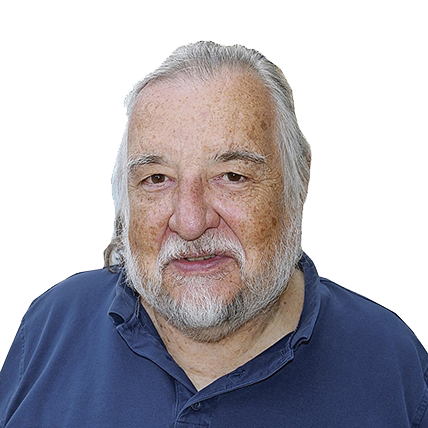Every morning my Inbox is filled with news articles – the Herald, Toronto Star, Washington Post, CBC, Globe & Mail, The Tyee, CNN, and even the Western Standard, the last refuge of unilingual opinionators still resenting that their careers ended when on February 13, 2015 the SUN News Network disappeared from our television screens.
I regularly scan their contents looking for stories dealing with “progressive” issues, even if the story takes a “negative” bent (i.e.: anti-progressive) in its writing. What I read, however, is too many reporters answering the “what” component of their “Who, what, where, when” and particularly “why?” questions, when the “why” is THE essential component in pursuing a story and writing something that might even give some “hint” as to why this event even occurred in the first place. This reporting reticence, unfortunately, is an economic problem, as opposed to its reporter not being able to properly perform his/her reporting obligations.
“Bottom line” pressure” is nothing “new” to newspaper chains, however. Recall that Margaret Thatcher “made her bones” by taking on the press unions in England faced with major lay-offs due to their parent companies having to replace printing presses built in the late 19th Century and confiscated from Germany following the Great War as reparation.
Canada’s newspapers have been facing similar “pressure” since the 1960’s, but from different directions. First off, we were increasingly relying upon news chains owning too many papers. Unfortunately, the political leanings of such ownership invariably creates pressure upon “downstream” editorial staff to “tone down” any possible opposition to the ideas fomented by its political favourites, resulting in most stories involving confrontation between political agendas ending up being slanted towards politicians with the more right-wing philosophy, or being written without any “why” factor influence, much as would have been written by a stenographer.
Here in Canada, no entity has taken more advantage of this so-called “legitimate” media political leanings than our Conservative brethren and the party’s current leader, Pierre Poilievre. Following the presentation this week of the federal budget, Poilievre’s usual diatribe normally spewed about the “evils” of a Justin Trudeau-led government was suddenly sucked back into the vacuum from which it was first recovered, as it became immediately evident that the Conservatives weren’t expecting such a forceful response to Canada’s housing crisis (and military readiness spending), which is now being put forward very late in their mandate, mind you, but being dealt with, nonetheless.
It has always been part of the eventual Conservative agenda that, should they come to power in 2025, their only certain policies are to “cut, cut, cut” (Dot Black, The Rainmaker, 1997) in order to reward the same type of carpetbaggers to whom Poilievre and Conservatives increasingly owe fealty. As a result, Poilievre has now changed direction in his anti-Trudeau pouting presentations, and stressing the budget’s “inflationary” potential, all while maintaining much of this budget’s funding targets are matters normally managed by the provinces, and therefore infringe upon provincial jurisdiction.
Unfortunately, this revisionist approach is a specious and seriously stupid reason for questioning priorities and intent within the Liberal’s budgetary agenda. For Canadians who may have lost hope of ever being able to afford reasonable accommodation, this money is like manna. All that the provinces have to do is accept the terms for receiving such funding, including demanding municipalities to plan more “compact” residential- commercial zones so that current infrastructural facilities will not be stretched beyond their limits, and if they won’t the money will go directly to its municipalities. We all know that neither premiers Smith nor Moe won’t accept such terms, as they are beholden to land speculators (e.g.: the Regina Bypass) who are major contributors to their election coffers.
In any case, Poilievre’s emphasis upon a federal constitutional “obligation” to provincial rights arguments falls grievously short when one considers how our media either misrepresents or misinforms its public when presenting the contradictions that have already been aggrieved by the Saskatchewan government– and none of the major media streams have called out Poilievre, Smith OR Moe for their hypocrisy.
As an example, violations of international law (train derailment resulting in toxic leaks affecting water and air quality across international borders, etc.) are not prosecuted against the province, but rather our nation (Recall January 16, 2023, when PM Trudeau visited the opening of the rare earth processing plant near Saskatoon). Equally sickening, the “Let them shop at Cameco” rhetoric first expressed by Brad Wall still holds water within Scott Moe’s party, making it sound as though Indigenous peoples should be treated as the far right now wants to treat our new and “excessive” immigrant population.
So the question here is, “How do we return a sense of proper reporting within a credible media source that allows for the telling of a story that should be heard by all Canadians?” The answer is, “We don’t – UNLESS that media source can go “paperless” yet still reach the 2 million or more readership that used to buy the 250 page edition of the Saturday Toronto Star in the early 1970’s.
I would dearly love to see the Herald finally able to put out a regular 36 to 48 page paper that covers everything of importance to Saskatchewanians, and using less “Op Ed” opinion pieces.
All this requires is that the average householder now buys an online subscription to the media outlet, and giving them access to a broader stream of interpretive coverage and critique of national and international events.
And guess what? Such subscriptions are “tax deductible”…


